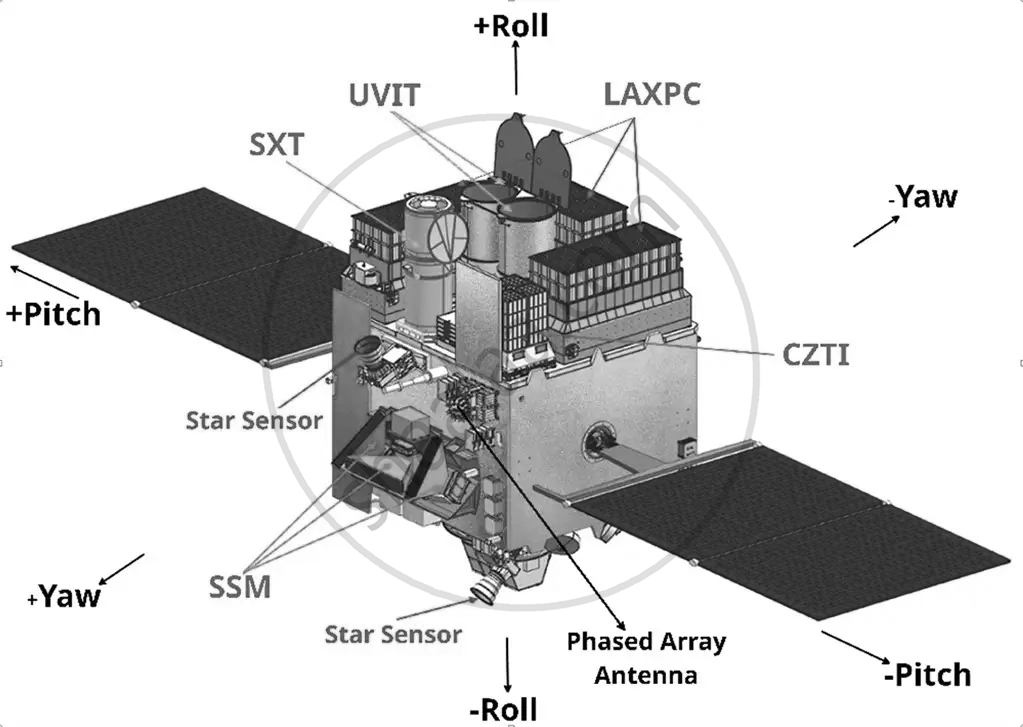In 2015, the Indian Space Research Organisation (ISRO) launched Astrosat, India’s first dedicated multi-wavelength space observatory. It marked a significant milestone in Indian space science, showcasing the country’s ability to develop advanced technology for astronomical research.

Astrosat
Features and Design:
- Multi-Wavelength Capability: Astrosat is unique because it carries telescopes and detectors that can observe the universe in multiple wavelengths—ultraviolet, visible, and X-rays—all on a single satellite.
- Made in India: Most of the components and instruments used in Astrosat were developed domestically, reflecting India’s growing self-reliance in space technology.

